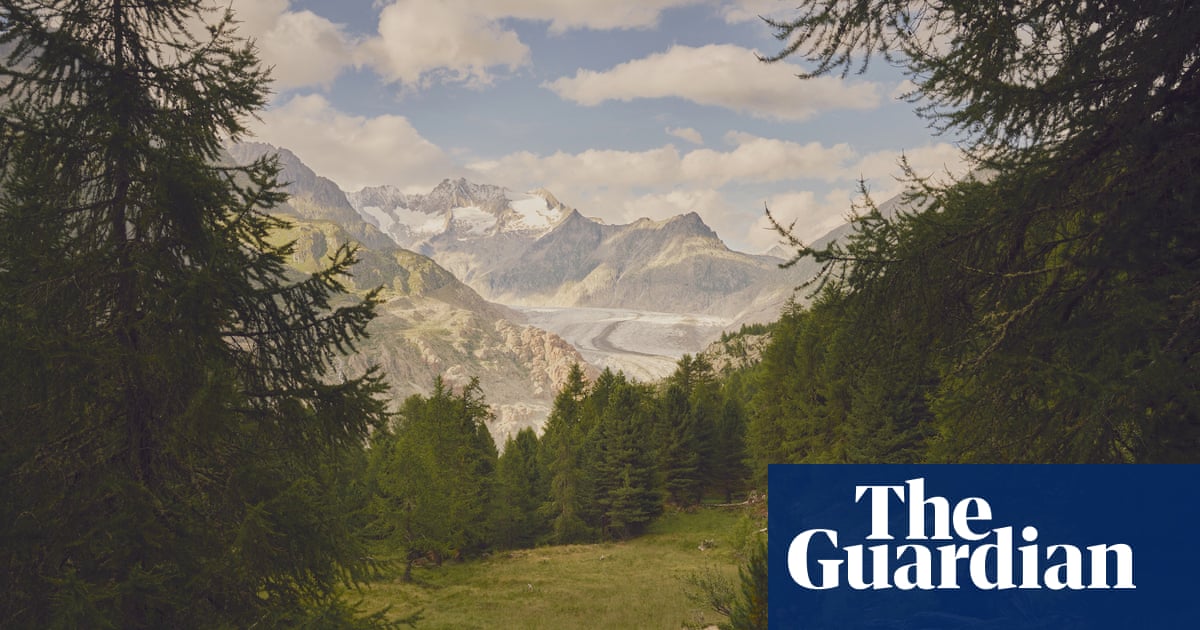
"From the slopes behind the village of Ernen, it is possible to see the gouge where the Fiesch glacier once tumbled towards the valley in the Bernese Alps. The curved finger of ice, rumpled like tissue, cuts between high buttresses of granite and gneiss. Now it has melted out of sight. People here once feared the monstrous ice streams, describing them as devils, but now they dread their disappearance. Like other glaciers in the Alps and globally, the Fiesch is melting at ever-increasing rates."
"The Aletsch glacier viewed from Moosfluh, looking towards the Olmenhorn and Eggishorn peaks Clouds scud across the sky and shafts of light marble the ice. On the rocky slopes leading down to the glacier from the ridge, there are pools of aquamarine brilliance, the ground speckled with startling alpine flowers. The ice feels alive, with waterfalls plunging into deep crevasses and rocks shimmering in the sun."
The Fiesch glacier has melted out of sight, leaving a visible gouge on slopes above Ernen in the Bernese Alps. The neighbouring Great Aletsch, Europe’s longest glacier in a UNESCO region, is receding by more than 50 metres a year yet remains visually imposing from above. Local attitudes have shifted from fearing ice as a devouring force to praying for its continued presence. The glacial landscape supports diverse habitats, from aquamarine pools and alpine flowers on rocky slopes to ice-adapted biota such as springtails, waterfalls, crevasses and richly textured microecosystems.
Read at www.theguardian.com
Unable to calculate read time
Collection
[
|
...
]